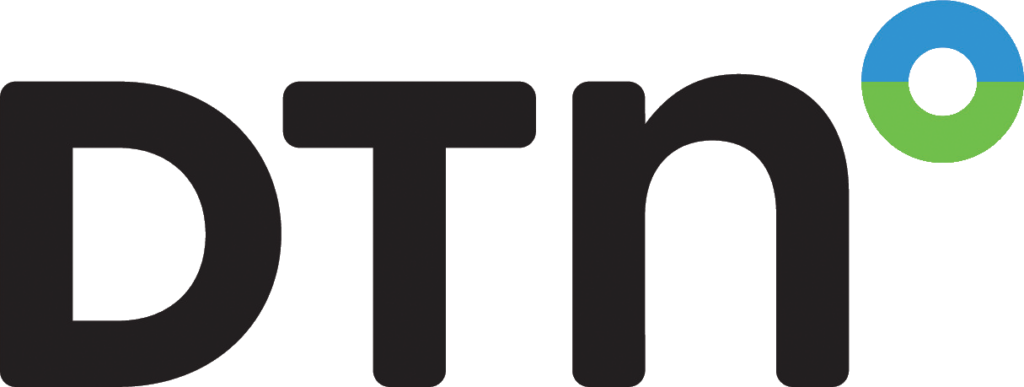A burst of heat will sweep across Australia’s southeastern states during the next six days, causing temperatures to soar in Sydney, Melbourne, Adelaide, Canberra and Hobart.
Northerly winds developing ahead of a broad low pressure trough will carry a hot air mass towards southern and southeastern Australia in the coming days.
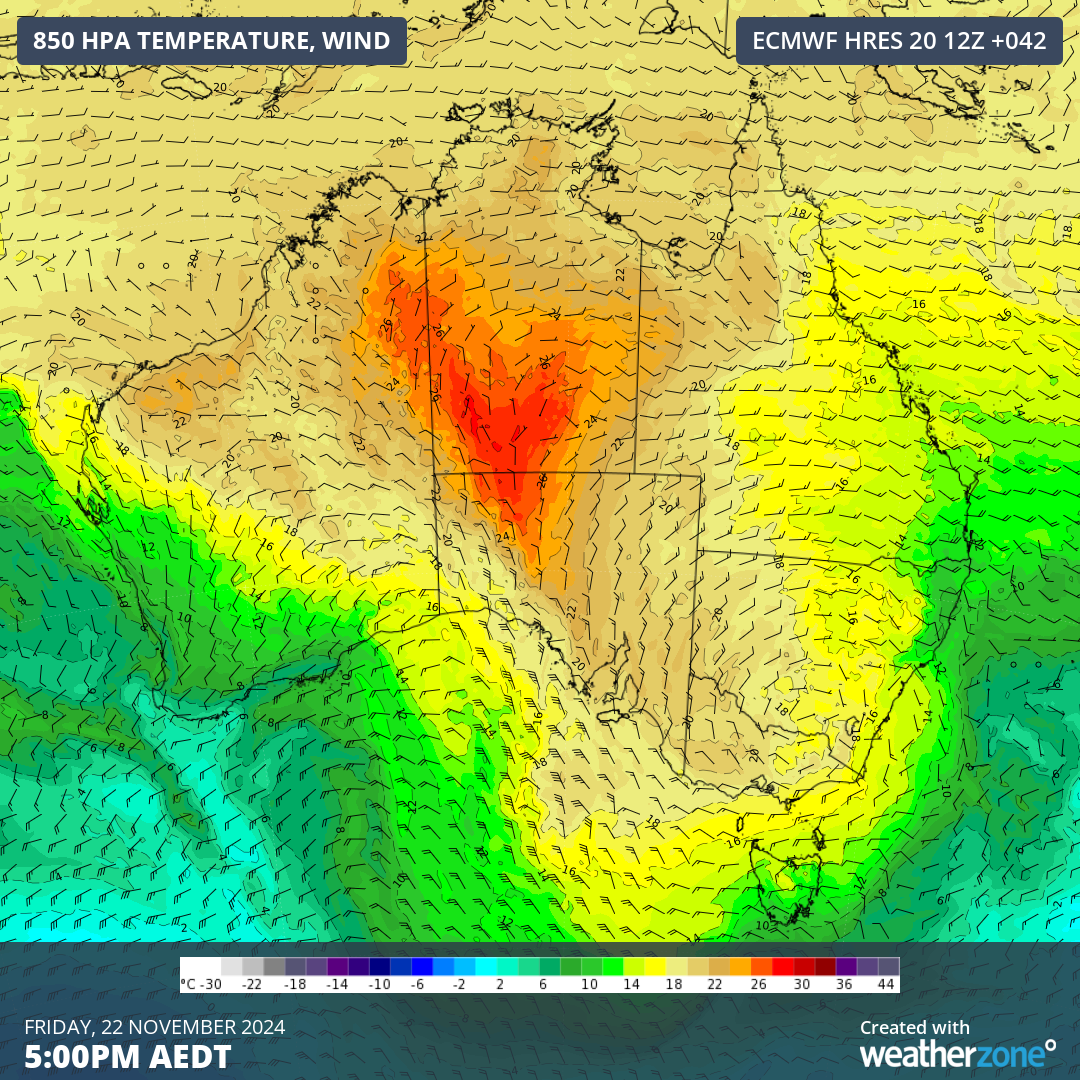
Image: Forecast 850 hPa temperature and wind at 5pm AEDT on Friday, showing northerly winds dragging hot air towards southern and southeastern Australia.
This pulse of heat will first hit SA from Thursday, before spreading further east on Friday and Saturday.
In SA, Adelaide’s temperature will reach the low to mid-30s for three consecutive days starting on Thursday, possibly peaking around 37°C on Friday. The city’s minimum temperatures will also stay up around 23°C on Friday and Saturday mornings, making it more difficult for buildings and their occupants to cool off overnight.
Temperatures in SA will get even higher outside Adelaide in the coming days, likely nudging 40°C in some parts of the state’s west and north. This heat will contribute to extreme fire danger ratings in the state’s West Coast and Eyre Peninsula on Friday.
Temperatures will also start to rise noticeably in parts of Vic, Tas, the ACT and NSW on Thursday before even hotter air arrives from Friday and Saturday.
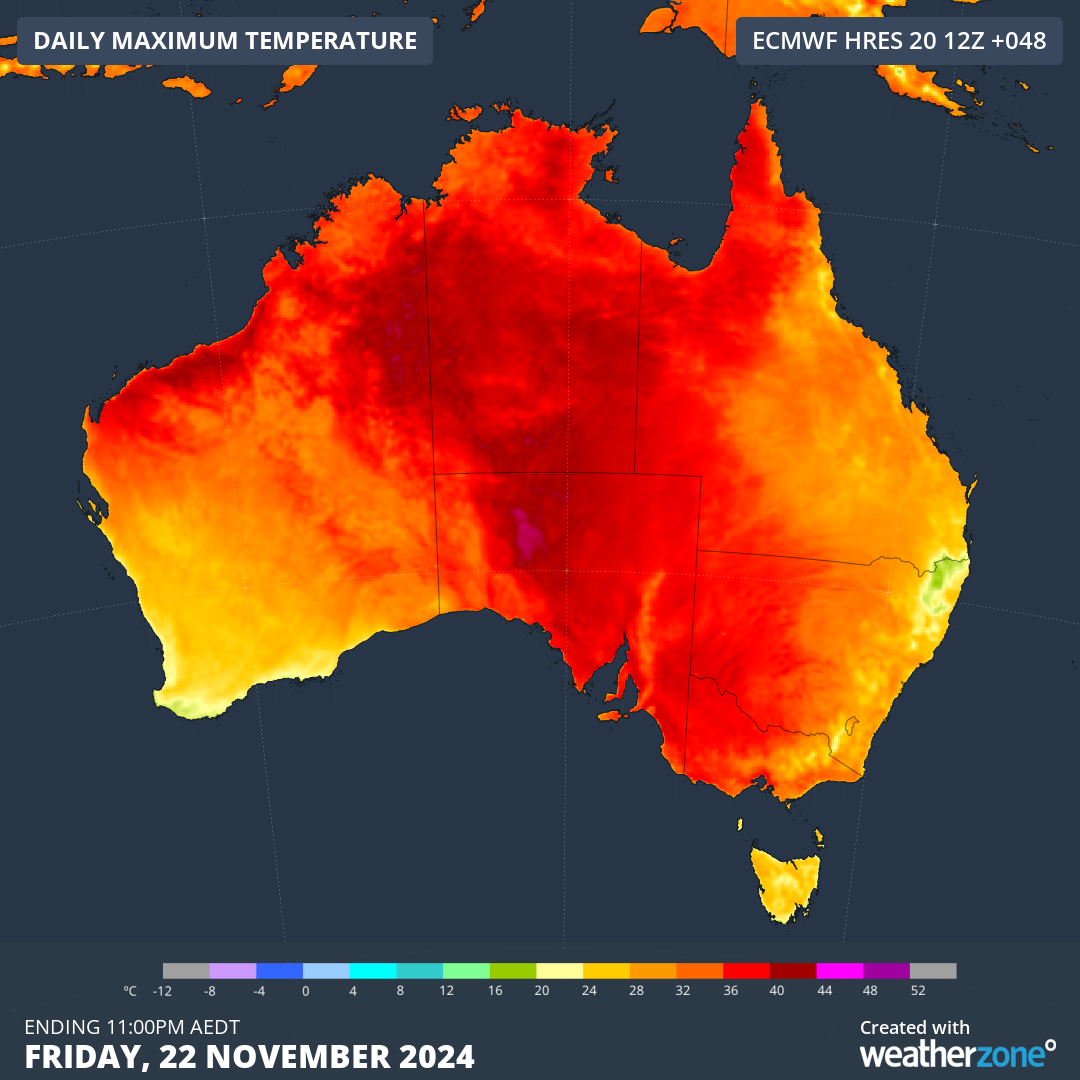
Image: Forecast maximum temperatures on Friday, November 22, according to the ECMWF-HRES model.
Melbourne will get close to 30°C on Thursday before enduring two days in the mid-thirties on Friday and Saturday. A minimum temperature around 22°C on Friday night/Saturday morning will also make for a restless night for those without access to air conditioning. Temperatures in northwest Vic are likely to reach about 37 to 38°C when the heatwave peaks on Friday and Saturday.
Hobart’s exposure to this week’s heat will be brief and less intense, with the city expected to reach the low-twenties on Friday and around 28°C on Saturday.
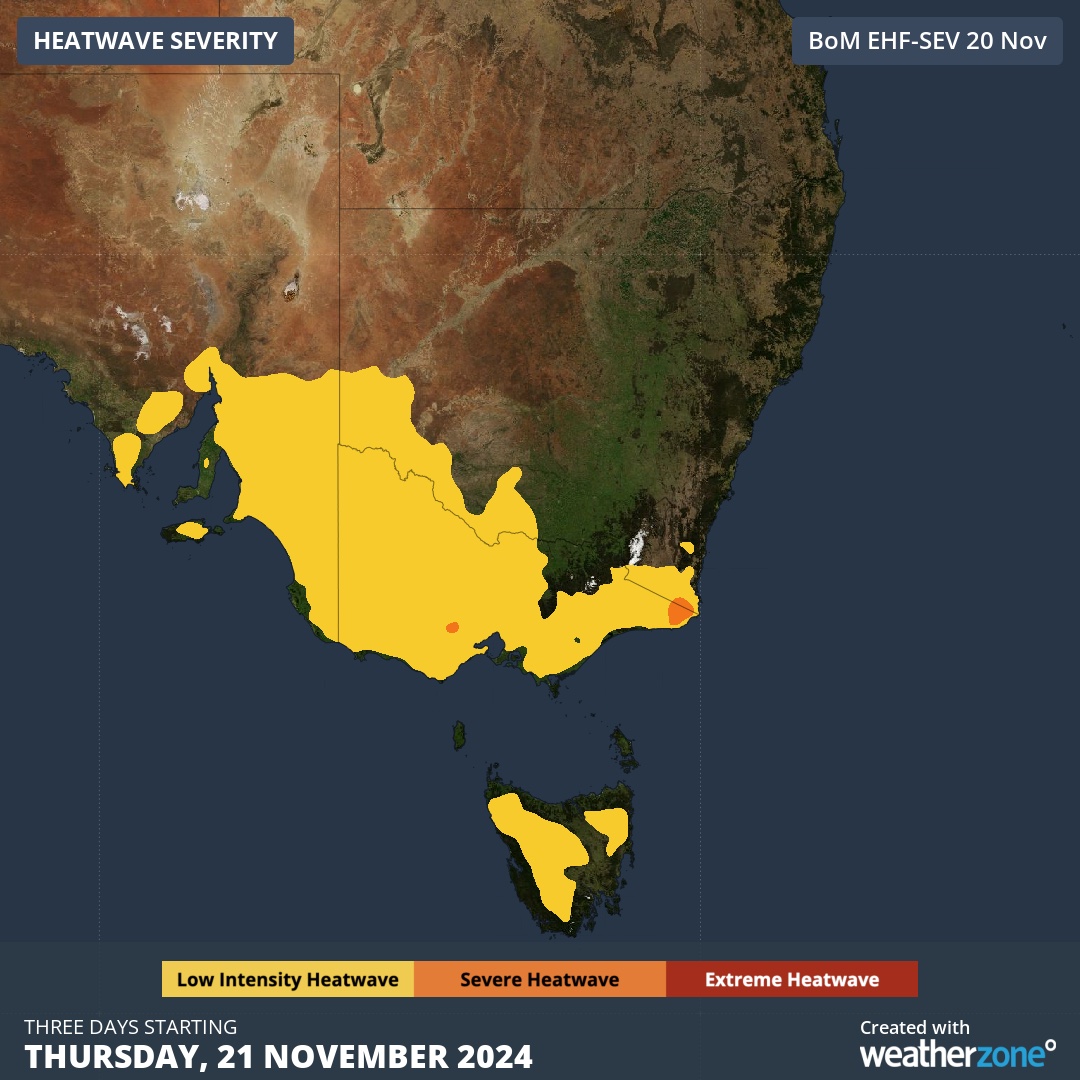
Image: Heatwave severity forecast for the three days starting on Thursday, November 21.
Canberra could see four days at or above 30°C from Friday to Monday, peaking at about 34°C on Sunday.
Sydney will gradually warm over the next five days and nights, with maximum temperatures in the city going from the mid-twenties on Thursday, to the high-twenties on the weekend, and around 30°C on Monday and Tuesday. Sydney’s western suburbs will be even hotter than the city during this heatwave, with Penrith predicted to reach about 39°C on Monday.
High dew point temperatures will elevate humidity in Sydney’s eastern suburbs, particularly on Monday and Tuesday, making it feel a few degrees warmer than it actually is. Warm nights will also make it harder to cool down between the summer-like days, particularly on Monday night/Tuesday morning when the city’s temperature could stay above 20°C.
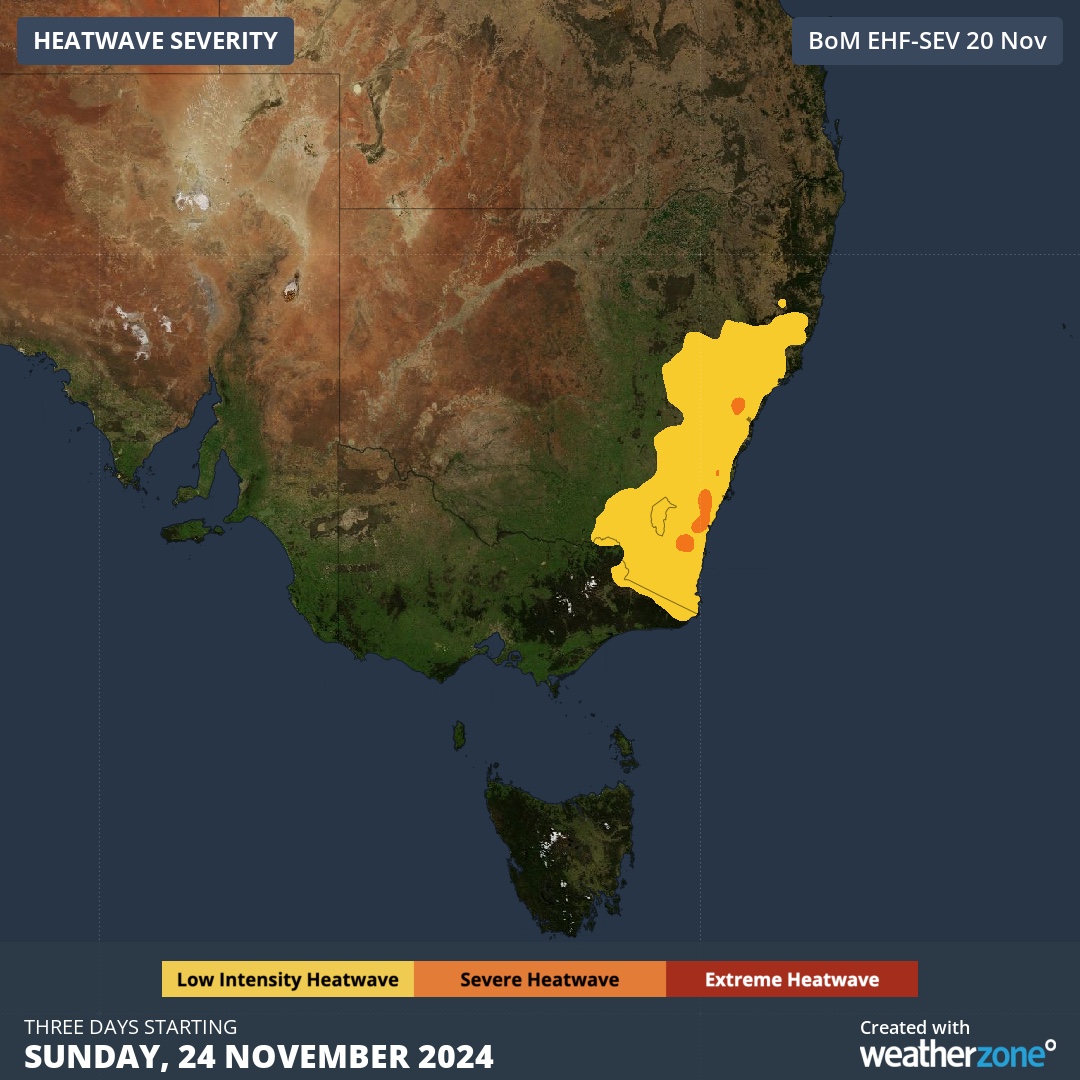
Image: Heatwave severity forecast for the three days starting on Sunday, November 24.
This heatwave is not expected to be record-breaking and hot weather is not unusual at this time of year. It is a reminder that summer is almost here for Australia and some forecast models are showing early signs that a more intense heatwave could be on the cards for parts of Australia in the opening week of December.
DTN APAC supplies precise weather intelligence to over 75% of the National Energy Market (NEM); and is the trusted provider for the Australian Energy Market Operator (AEMO).
Weatherzone’s next-generation nowcasting and forecasting system, OpticastTM, is independently proven to outperform other industry models, allowing energy traders to respond rapidly to changing conditions. From 14 day forecasting to seasonal outlooks, you have access to complete and powerful weather intelligence giving you the confidence to make the best call.
Meeting the needs of the changing market, Weatherzone utilises high-resolution modelling and local knowledge to provide 5-min granularity observations and forecasts, optimising your market bidding and maximising your profits. These, coupled with briefings from our energy meteorologists, give you full awareness of the associated risk.
Benefit from specialised indices such as apparent temperature, Cooling/Heating Degree Days (CDD/HDD) and Effective Degree Days (EDD) to help accurately predict demand. You can get a clear picture of forecast conditions across the market and quickly assess heat/heatwave potential from 14 days out to 12 months
No matter where your energy trading focus lies, we have the power generation and weather insights to inform your critical decisions, keeping you ahead of the curve. For more information please visit our website or email us at sales.apac@dtn.com.
